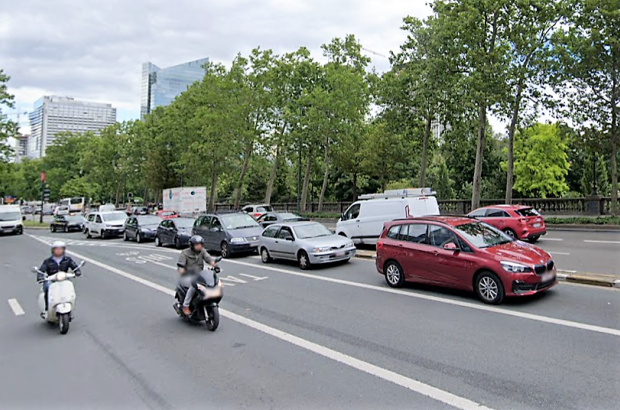- Daily & Weekly newsletters
- Buy & download The Bulletin
- Comment on our articles
Road safety: Brussels' most dangerous streets revealed
The top three most dangerous streets for traffic accidents in Brussels are Boulevard Emile Bockstael, Avenue du Jardin Botanique and Avenue Houba de Strooper, new figures from Statbel have revealed.
These are the streets where the most traffic accidents took place over the past decade, according to an interpretation of the data from Belgium’s road safety agency Vias.
“These are busy traffic axes, with busy intersections where several road users converge,” Vias explained to La Dernière Heure.
Avenue Emile Bockstael saw 308 accidents from 2012 to 2021, including one fatal accident. Avenue du Jardin Botanique saw 251 accidents in the same period, including two fatal ones, and Avenue Houba De Strooper had 248 traffic accidents, also with two fatal ones.
These top three are among the busiest in the Belgian capital. “They are certainly not quiet roads. It's more of a wriggle and rumble,” Vias spokesperson Stef Willems told BRUZZ.
Also high on the list are Boulevard de Waterloo (182 accidents over 10 years), Boulevard Leopold II (174 accidents over 10 years) and the Chaussée d'Anvers (172 accidents, two fatalities over 10 years).
When looking only at the latest annual figures, Rue Dansaert joins the top three, with 30 accidents in 2021, alongside Avenue Emile Bockstael (37 accidents) and Avenue du Jardin Botanique (30 accidents).
Brussels Mobility says it is committed to lowering the number of road accidents, but that traffic pressure needs to come down in order for this to be possible: there are too many cars on Brussels' streets.
There are also nuances to the figures. While a total number of traffic accidents does give an indication of whether the road is dangerous, a thorough judgement would involve consideration of the length of a road compared to others, along with the speeds driven and the vehicles involved in the accidents.
In terms of Boulevard Emile Bockstael, which was number one in both recent figures and the 10-year average, Willems pointed to the number of different traffic types converging.
“That's potentially more likely to cause conflict, but that doesn't mean that's necessarily true. The figures also say nothing about the severity of conflicts,” Willems said, adding that reducing accidents will come down to separating traffic flows as much as possible.
“That is the basic principle of traffic engineering,” said Willems.
“But it's not always that simple: in some places, by constructing a conflict-free intersection, you're going to create problems in other places: for example, by forcing motorists to spend longer in traffic jams.”
Another solution is to encourage people to forgo cars for public transit or bikes.
“Taking away the car pressure also means taking away the danger,” Willems explained, adding that no matter the type of road user (pedestrian, cyclist, motorists), being vigilant and obeying traffic rules is also key.
“Safe traffic is everyone's responsibility.”


















